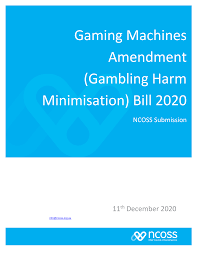Money, money, money...
Ron Browne • April 15, 2021
Budgeting and Finance Review

Money, money money….
For most businesses, especially clubs, we have just finished the third (3rd) quarter of the financial year. Three months left to hit the targets and to plan for the new financial year.
What should we be looking at?
The Board and senior leadership team should have recently completed or be hard at, the strategic planning. This will give the Chief Executive Officer (CEO), General Manager (GM) or Secretary Manager (Sec Manager) a document from which to draw guidance for the next operational/annual/business plan and budget for the coming financial year.
The key things to be looking at are:
X How much money do we have in the bank?
X Are we on budget, above or below budget for revenue? If we are on or above – great, but if we are below – what can we do to generate the additional revenue to meet the year-end target?
X Are we on budget, above or below budget for expenses? If we are on or below – great, but if we are above – what can we do to reduce expenses to meet the year-end target?
X Where are we in regard to the key ratios?
o EBITDARD – earnings before interest, depreciation, amortization, rent and donations
o What is our overall wages percentage (of total revenue)?
o What is our AEMP (Advertising, entertainment, marketing and promotions) percentage (of total revenue)?
o Are we making a profit, breaking even or making a loss?
X Which are the strong parts of our business? Which products or services are selling best, and which ones are the most profitable?
X Did we budget accurately for the last financial period?
Pending the answers to the questions above, you may be sitting comfortably, or you may be in a world of pain, wondering how to manage cashflow, pay bills, pay staff or meet loan repayments.
The number one strategic goal of every organisation is to break even (at the very least) or preferably make a profit. So now is the time to be reviewing your budgets for the next year.
The Budget Review Process
There are a few ways to develop a budget. Many companies make what I believe is a grave mistake and just roll last year’s budget over, adding maybe 3 – 5 percent to the numbers – to cover inflation and to look like they are growing. This is a really poor way to budget for the year to come as it assumes nothing changes, but we can grow by 3 – 5 percent. Depending on the market you are in, especially a mature market like the club industry, this may not be possible.
A better approach is to develop the budget from the ‘bottom up’. This means you look at the main areas of business and assess market conditions – competition, inflation, population statistics and (in agriculture) weather forecasts. Which products or services have potential to grow beyond last year’s sales? Which ones might be mature and declining? Are there any new products or services you are planning to introduce during the new financial year? These need to be calculated into the new budget allowing for the ups and downs to be considered. Timing is also important as it gives you an indication of when in the year you can expect the revenue to rise or fall. And of course, the seasonality of trade must be addressed too. School holidays, Mothers’ Day, Fathers’ Day and Anzac Day.
Another less popular but regularly used approach is the ‘top down’ approach. This is common amongst large shareholder owned organisations where the shareholders and senior leadership set a revenue and profit target for the management to implement. The numbers then need to flow down through the business units and product areas and stretch targets are often the main outcome here.
In the club industry, you cannot incentivate sales of alcohol or gaming, so this top down process can be a challenge to implement. It is much more preferable to review your market each year and make the adjustments for the forecast environment to set a realistic budget.
What should be included?
Your business will have a full set of accounts already, so all the basics will be covered by ledger accounts for:
X Cost of goods – purchase of product and raw materials
X Staff wages and salaries
X Advertising, Entertainment, Marketing and Promotions (AEMP)
X Accounting, insurances and amortization (paying off loans) fees
X Rent, repairs and maintenance, depreciation
X Office supplies and staff amenities
X Donations and other charitable expenditure
X Capital expenditure – purchase of new assets for the business
And whilst we are talking assets – when did you last update your Asset Register? This is something that needs constant attention, as the organisation is handling and acquiring hundreds of thousands of dollars’ worth of plant and equipment, as well as buildings, fixtures and fittings. These must all be accurately accounted for and can impact the equity position of the organisation.
Once you have drafted your budget, hopefully in conjunction with your operational plan for the next year, the next step will be for the board to approve the budget, so that come 1 July 2021, you will be ready to rock and roll with a bright shining new year, armed with an accurate budget, the appropriate resources and support for your plan.
For more information or assistance with your strategic plan, operational plan and budget, contact Ron Browne, Managing Consultant, Extrapreneur Services on info@extrpreneurservces.com.au
or 0414 633 423.










